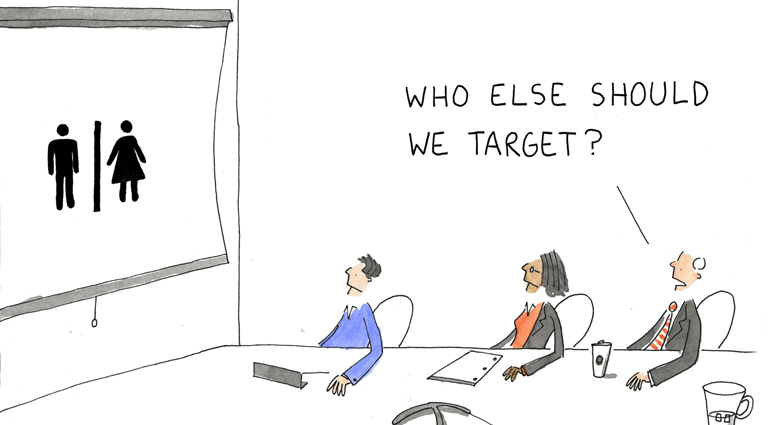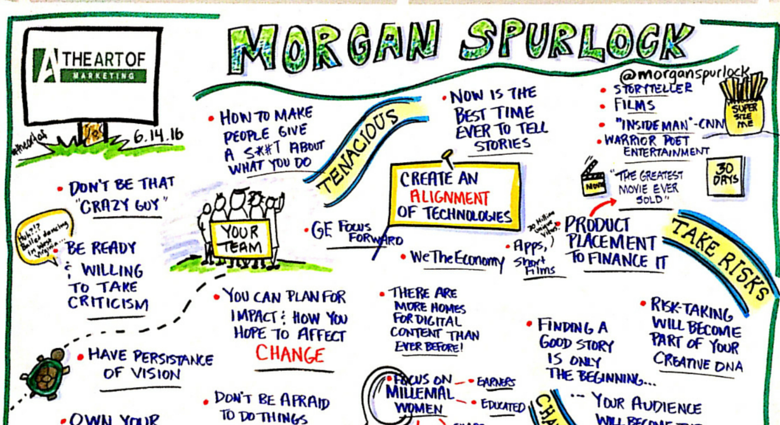A major grocer was surprised to learn that a 50 percent off promotion on a popular cereal brand, which increased its Stock Keeping Unit (SKU) sales by more than 500 percent, actually resulted in a negative return for the category overall. While the deal attracted some new customers, it also meant that customers who regularly bought the cereal actually spent 56 percent less in the category during the promotion. Contrast that to a buy-two-for-$5 deal that the same grocer ran for butter, which raised SKU sales by 196 percent, attracted new customers, and also increased category sales among existing customers by 51 percent. The result was a positive overall return on this promotion.
These results would not have been detected, were it not for the ability of the retailer to track customer-centric data, and embed this into day-to-day decision making.
In a data rich world, the greatest potential lies in our ability to add to transaction data...
Tracking customer data is becoming big business in the retail industry, where Aimia operates and has enabled some strong achievements. In Canada, for example, working with partners of the leading Aeroplan loyalty program, we have assisted one partner in lifting its customer basket spend by 50 percent for members versus non-members. In another instance, a partner saw a 56 percent increase in wallet share among members. These examples show the importance and power of collecting and analyzing customer-centric data, which most retailers are only now beginning to tap into.
And that task is about to get unbelievably harder, because in the next decade, data experts predict that retailers will be swamped by a flood of information about their customers. Data will be everywhere. The average global IP traffic in 2016 is expected to hit 150 petabytes per hour, the equivalent of 278 million people streaming an HD movie at the same time. And the Big Data services market is expected to grow from $3.2-billion in sales in 2010 to $16.9-billion in 2015.
As data explodes, so will online sales, reaching 450 billion per day by 2020, according to research firm IDC. That amounts to 5.2-million transactions per second. These numbers are mind-boggling and will require retailers to have a sound data strategy driven centered around their customers.
Information around the world is being captured — often in real time — tracked, analyzed and digested to discover interactions and relationships. A 2011 McKinsey Global Institute study estimated that “a retailer embracing big data has the potential to increase its operating margin by more than 60 percent.”
For marketers, these are fascinating, yet challenging times, and they present a treasure trove of unexplored opportunities.
However, marketers also face the prospect of drowning in the data flood as they tread water searching for smaller customer centric ponds of data. In reality, among the petabytes of available data, customer-centric data sets are typically much smaller — five terabytes, say, versus five petabytes — but can yield dramatic, and measurable, results. Loyalty program expertise will be essential for navigating the oceans of data and helping marketers identify the smaller pools that matter most.
The loyalty industry has been at the forefront of using data and insight to deepen customer relationships. The lower cost and enhanced features of analytical tools and infrastructure will help retailers unlock the potential of loyalty data as retailers try to find their footing in this new world.
So where to begin? Instead of diving headfirst into pools of unstructured data, retailers will be more effective focusing on customer-centric data, which is most directly indicative of the strength and value of customer relationships. It’s not the size of the data set that matters most, but identifying and focusing on relevant data that will unlock meaningful insight.
Historically, the most important piece of the data puzzle has been the transaction: the data that tells you what, when, and where a customer buys from you. Transaction data has always held the greatest value for marketers because it represents both a snapshot of transitory customer behaviour and a longitudinal data point to help measure customer lifetime value and potential.
Today, transaction data represents the floor of your marketing potential, rather than the ceiling.
If you are an e-commerce retailer or a payment card provider, then transactional data is an easy play; legacy brick-and-mortar retailers may find purchase data harder to come by without a store card or a multi-tender loyalty program. But marketers looking for a place to start have usually done well by starting with the transaction.
In a data rich world, the greatest potential lies in our ability to add to transaction data other data points from customer interactions throughout the entire purchase cycle. These new data sets illuminate, anticipate, and reinforce purchase behaviour, and function as levers to reinforce relationship value. For example:
- Loyalty program data. By connecting purchase data to individual customers, loyalty programs allow you to devise test-versus-control environments, perform customer segmentation, and measure the impact of your marketing offers. With their ability to reward customers based on current and potential value, currency-based programs provide an even richer data set.
- Web analytics data. By connecting web search and online shopping behaviour to transaction data, you can customize your web experience to the individual. Amazon, for example, famously conducts A-B tests down to the level of font size and colour to determine the impact of the online experience on purchase behaviour.
- Shopper data. For retailers, SKU-level and shopping basket data provides a nearly bottomless source of insight on retail shoppers. Sophisticated retailers use shopper data to influence store design, to optimize pricing, and to help category managers make smarter promotional decisions.
- Auction data. Understanding a customer’s propensity to purchase and the price elasticity within an auction environment provides brands and retailers with unique insights into pricing models and consumer behaviours.
- Social media data. Just knowing how many Facebook users have “liked” your page tells you nothing about the impact of those “likes” on sales. But what if you encourage customers to connect their social graph to loyalty program membership? You can open a rich vein of data on how social media engagement influences purchase decisions.
- Mobile data. Similarly, encouraging mobile engagement through a reward program app can uncover location, offer response, and even in-store behavioural data that can enhance your ability to build relationships through mobile devices. You’ll learn to focus on offers that enrich the mobile experience, and eschew those that force customers to disengage.
- CRM data. By connecting purchase and loyalty data to data flowing in from your call centres, returns department, and points of sale, you can develop robust customer profiles that allow you to design differentiated experiences for your most valuable customers.
- Third-party data. The ability to overlay demographic, lifestyle, and other third-party data sets on your core transaction data set can unlock additional insight beyond what your customer information, help identify underserved markets, and even help develop new market opportunities.
Today, transaction data represents the floor of your marketing potential, rather than the ceiling. The potential to tie interactions to transactions to fuel marketing insight, and to leverage new communication channels to reward profitable behaviour more rapidly, bodes well for the future of customer loyalty. Retail marketers that leverage customer-centric data will, with their clients’ enthusiastic help, create a future of real relationships by knowing which drops to drink.





.png)



What Did You Think?